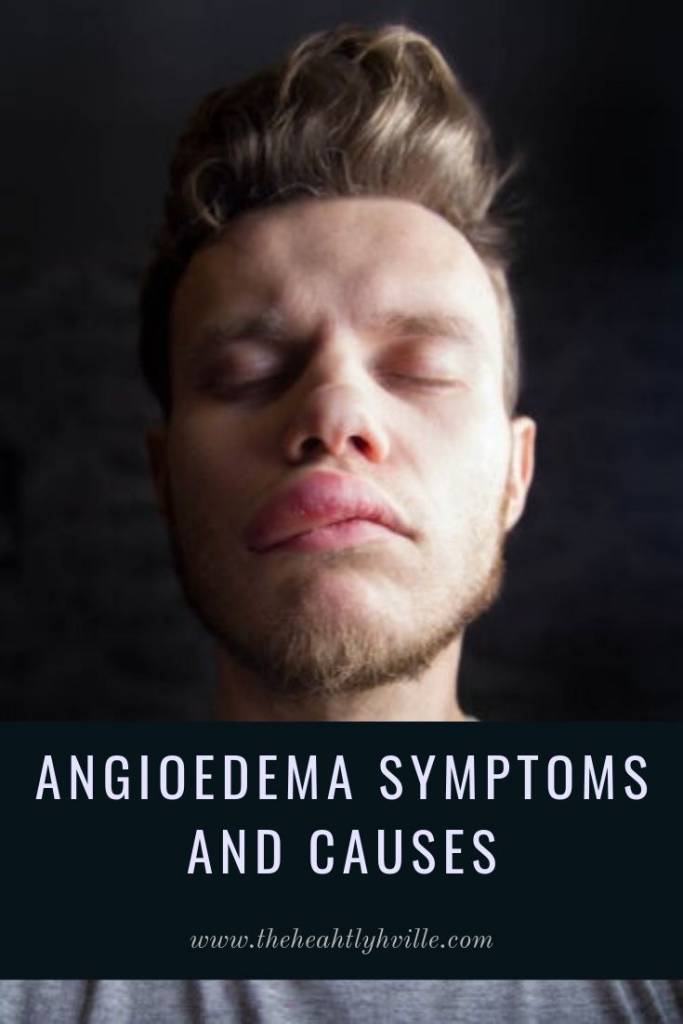Angioedema or Quincke’s edema is caused by a deficiency of the C1 inhibitor, an enzyme that regulates the activation of the immune system.
Quincke’s edema, angioneurotic edema or hereditary angioedema is the hereditary genetic disease that presents with painful inflammation and appearance of edema in the deep dermis, in the subcutaneous tissue, in the mucous membranes and even in some viscera.
Sometimes, this genetic disease determines a life-threatening condition if it affects the respiratory tract. Learn more about her in this article.
Types of Quincke’s edema
Quincke’s edema can be of two types:
Type 1 (more frequent): the deficiency of the C1 inhibitor, which is a protein that regulates the classical pathway of activation of the complement of the immune system. It is a bridge between innate and acquired immunity that helps us defend ourselves against infections.
Type 2: characterized by the malfunction of C1 inhibitor.
In fact, the first symptoms of Quincke’s edema usually appear during childhood or adolescence. At older ages, and when patients have an associated disorder, it may be the case that C1 inhibitor deficiency is acquired for the following reasons:
The complement system is consumed due to a neoplastic disorder (B-cell lymphoma).
Antibodies produce against the C1 inhibitor. This occurs in autoimmune diseases such as lupus erythematosus.
What can trigger Quincke’s edema?
In fact, the trigger of Quincke’s edema can be a mild trauma, a viral disease, the ingestion of certain foods, stress and even exposure to cold.
Symptoms associated with angioedema
The characteristic symptoms of Quincke’s edema are very similar to those that appear in other forms of bradykinin-mediated angioedema:
- Painful asymmetric inflammation of the face, lips and tongue.
- Inflammation on the back of the hands, feet and genitals.
- Intestinal obstruction.
- Sickness.
- Vomiting.
- Quincke’s edema does not occur with urticaria or pruritus.
Diagnosis
Bradykinin, which is a potent vasodilator, is responsible for most of the symptoms of Quincke’s edema.
Therefore, doctors carry out the diagnosis through means of laboratory tests through the detection of the serum concentration of the complement. For this, doctors measure the concentrations of C4, C1 inhibitor and C1q, which is a component of C1:
Types 1 and 2 show low levels of C4.
Quincke’s edema type 1: low concentrations of C1 inhibitor and normal concentration of C1q.
Quincke’s edema type 2: normal or high concentration of C1 inhibitor and normal concentration of C1q.
Acquired deficiency of the C1 inhibitor: low concentrations of C1q.
Therefore, if the angioedema is not accompanied by urticaria and is repeated without clear cause, a Quincke’s edema or acquired C1 inhibitor deficiency should be suspected.
Treatment of Quincke’s edema
For acute attacks that endanger the life of the patient due to airway compromise: doctors administrate concentrate of C1 inhibitor from human plasma intravenously.
Long-term prevention: treatment is based on a C1 inhibitor (ecallantide or icatibant). If none of these medicines are available, doctors use tranexamic acid in the European Union.
Attenuated androgens (danazol) are also good for prevention or as a prophylactic measure. These stimulate the hepatic synthesis of C1 inhibitor.
In case of surgery, intubation or procedure that involves trauma in the cervico-facial region, a possible short-term acute attack should be prevented. Doctors use the C1 esterase inhibitor concentrate thirty minutes before the invasive procedure.
In fact, to relieve symptoms: analgesics, anti-emetics and hydration can be used.
Conclusion
Although it is a pathology of low prevalence, Quincke’s edema can compromise the patient’s life if there is no diagnosed in time.
The clinical signs and symptoms that occur with this disease can lead to the suspicion that it could be another pathology in a wrong way. Therefore, before the slight suspicion of the presence of angioedema, the specialist should be consulted.
Don’t forget to SHARE the angioedema symptoms and causes with your friends and family on your social networks!

